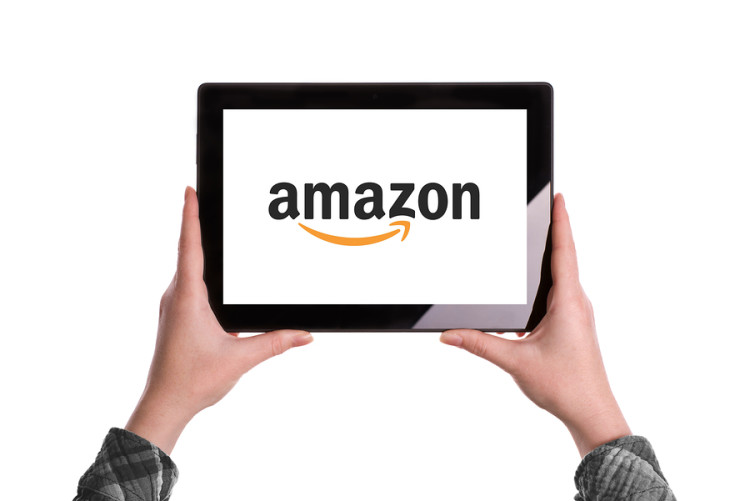Amazon Doesn’t Deserve a Blank Check for Its Ambition: Gadfly

published Oct 26, 2017, 4:21:29 PM, by Shira Ovide
(Bloomberg Gadfly) —
Amazon has received a free pass on delivering profits to investors. It might be time to revoke it.
Third-quarter revenue rose about 34 percent, better than Wall Street’s expectations. The tally included about a month of sales from the Whole Foods grocery chain that Amazon.com Inc. officially acquired in late August, and the addition boosted Amazon’s reported sales by about $1.3 billion. Excluding the newcomer, Amazon’s revenue rose about 30 percent, the fastest rate in a year.
But Amazon is spending even more. Core operating costs increased at the fastest rate in at least five years, and the spending is eating up nearly all of Amazon’s sales. The company in the last three months generated its smallest operating profit margin in three years, at a puny 0.8 percent, even including a small boost from Whole Foods.
Investors have mostly brushed off meager-to-nonexistent profits from Amazon, and shares climbed Thursday in trading after the regular U.S. market close. This reaction is understandable because Amazon’s habit of investing nearly every dollar coming in the door has worked. The company has changed how millions of people shop, created a giant cloud-computing operation from scratch and greatly expanded its market by serving as a middleman for product sales by millions of merchants.
Skinny profits have been a fair trade-off for Amazon’s grand mission to grab a bigger share of spending from people and businesses. But Amazon is more ambitious than ever, and its spending surge is more of a black box than ever. It’s time for investors to demand more answers about where Amazon’s investments are going and whether they are worthwhile.
These are some signs of the burdens of Amazon’s ambitions: Since the middle of 2016, Amazon has doubled the number of full- and part-time employees, and annual capital costs have risen 67 percent. At the same time, the company’s trailing 12-month revenue has increased 34 percent.
That spending spree has drastically squeezed Amazon’s free cash flow, including payments for warehouses and computer data centers that Amazon has leased. For each dollar of cash Amazon took in during the last year, it spent about 98 cents.
It’s Amazon’s way to spend nearly every stray nickel, even if the investments don’t translate immediately into fresh revenue. But the trouble is, right now it’s not necessarily clear how much of the company’s growing spending is for no-brainer investments such as inventory warehouses, improvements to speed delivery and its Amazon Web Services operation, and how much might be going to unproven projects.
It has been easy to let Amazon CEO Jeff Bezos spend whatever he wants, but there are more unproven projects than ever. Amazon spends billions of dollars a year on programming for its web video service, and its recent strategic reboot and leadership tumult raise questions about whether that initiative is paying off as well as Amazon executives (vaguely) say.
Ditto for its own line of voice-activated gadgets for the home. Devices like the Echo speaker, and the technology behind it, have given Amazon a shot at dominating the next era of computing. But Amazon has said little about how its unspecified but likely large investments in its homegrown hardware fit into the company’s strategy.
Groceries are perhaps the biggest business opportunity of all. Americans spend something like $800 billion a year on food shopping. But Amazon hasn’t said much about whether and how its investments to grab a slice of the pie will pay off, nor how Amazon plans to crack a market in which it hasn’t had much success. It’s easy to think of Amazon as an unstoppable force, but it has been slogging for a decade without much success in its own grocery delivery service.
All these Amazon investment priorities will require more spending. Continue down the list and it becomes difficult to imagine how the company can deliver $6.4 billion in operating profit next year, as Wall Street expects. That estimate has been scaled back sharply in recent months, according to Bloomberg figures, but it is still 50 percent higher than Amazon’s peak annual operating profit of $4.2 billion in 2016.
No one should be surprised anymore than Amazon continues to defer profits for the foreseeable future. But Amazon no longer deserves to be handed a blank check without explanation.
This column does not necessarily reflect the opinion of Bloomberg LP and its owners.
Shira Ovide is a Bloomberg Gadfly columnist covering technology. She previously was a reporter for the Wall Street Journal.
To contact the author of this story: Shira Ovide in New York at sovide@bloomberg.net To contact the editor responsible for this story: Daniel Niemi at dniemi1@bloomberg.net
COPYRIGHT © 2017 Bloomberg L.P







No Comment